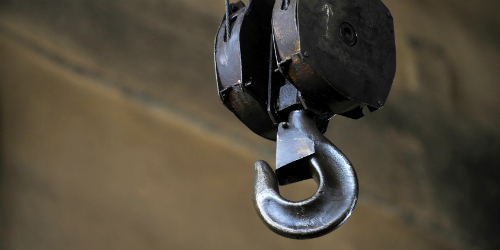Crane and Hoist

Regulations and procedures relating to devices that lift and move personnel and equipment are very extensive and specific to the application and type of equipment being used. This is because of the many interacting factors affecting raising people or materials from the ground. There are many hazards and no one single directive other than carefully evaluating all those factors, following the instructions of competent persons, and referring to the regulations exists. Working with cranes, derricks, hoists and other lifting devices can be one of the most hazardous occupations.
Cranes and hoists come in all shapes and sizes. They can be used inside a building or on the exterior. They can be fixed or mobile. They can be used to raise or lower employees, or deliver heavy or bulky materials.
For this reason, crane operators are required to be certified by an accredited organization, and are required to regularly demonstrate competency.
Not only are the regulations specific to the equipment important but other concerns such as electrical safety, fall protection, personal protective equipment, and driver safety are also important and can be critical in performing a lifting task safely. Unless you are trained do not attempt to operate a crane or other lifting equipment.
To get more information on the applicability of crane and hoist safety programs for a specific County operation please contact the corresponding departmental Safety Coordinator.
For further information on specific regulatory guidelines please refer to the link(s) below:
Cal-OSHA Hoisting Equipment (General Industry)
Cal-OSHA Construction Hoists (Construction)
Cal-OSHA Cranes and Derricks in Construction (Construction)
 Translate
Translate